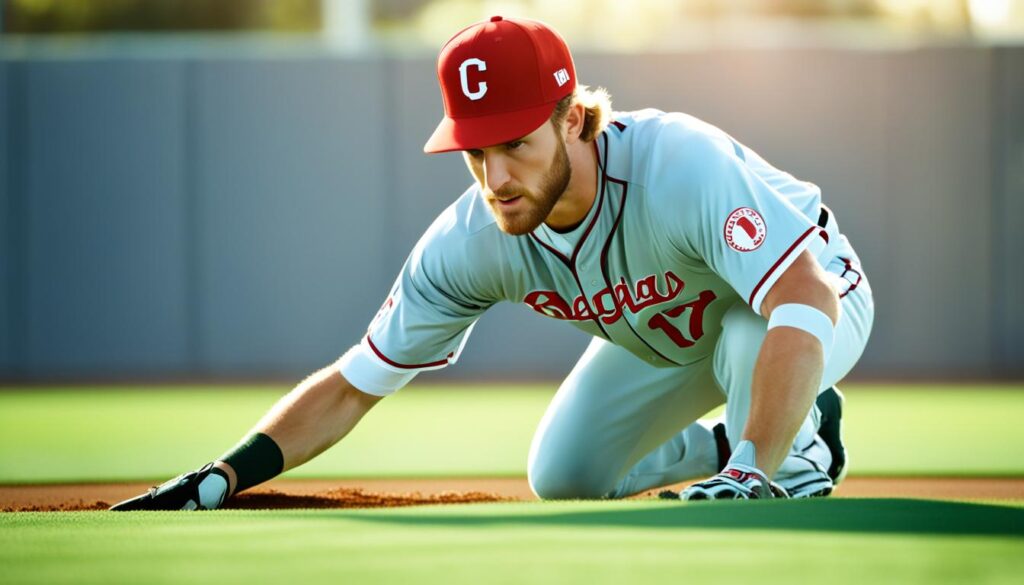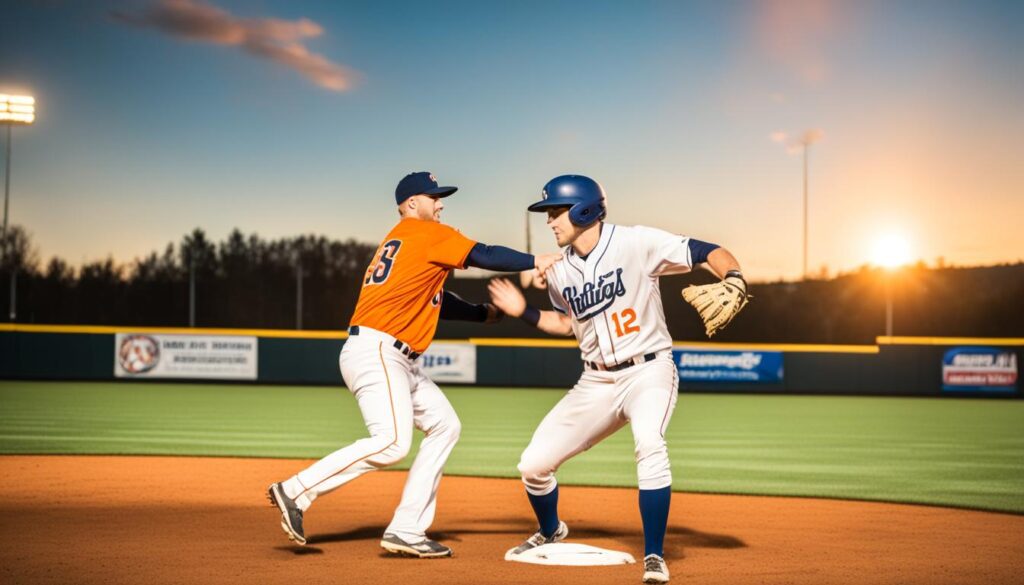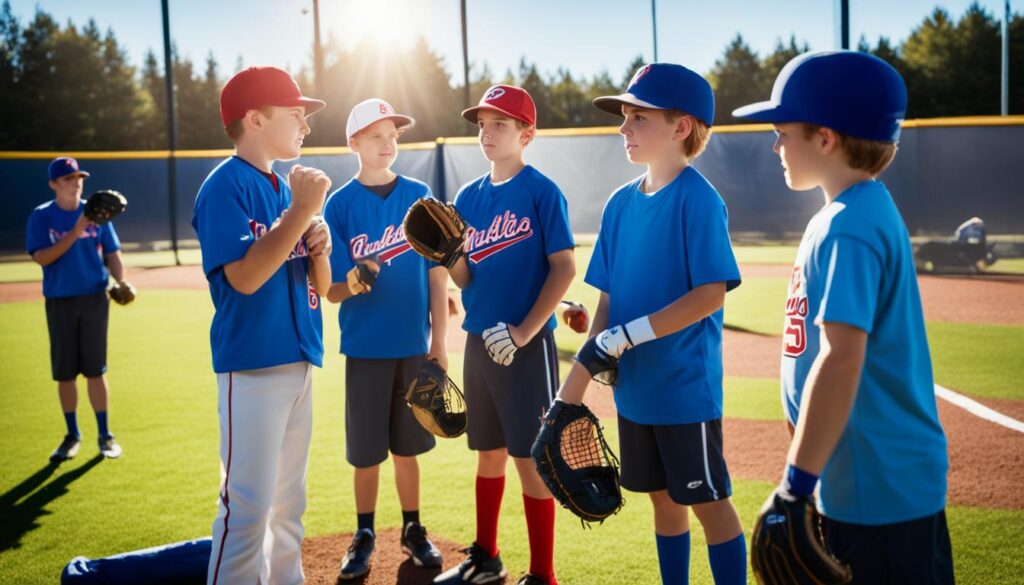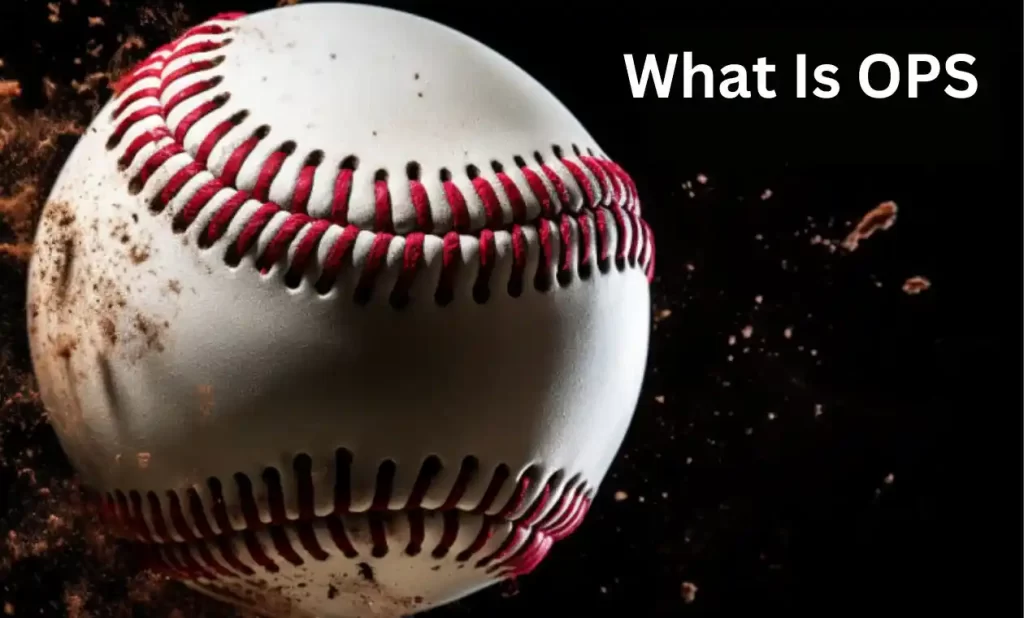
Have you ever wondered what it takes to be a successful first baseman in baseball? What are the essential skills, techniques, and strategies needed to excel in this position? Whether you’re a beginner or an experienced player looking to enhance your game, this comprehensive guide is here to help you navigate the ins and outs of playing first base.
From understanding the role of first base in baseball to mastering the necessary equipment and honing your fielding skills, this article covers everything you need to know to become a standout first baseman. So, are you ready to take your game to the next level? Let’s dive in!
Key Takeaways:
- First base is a crucial position in baseball, requiring specific skills and techniques.
- Understanding the rules and responsibilities of a first baseman is essential for success.
- The right equipment, such as gloves and cleats, can enhance your performance at first base.
- Mastering techniques like footwork and receiving throws is key to excelling as a first baseman.
- Effective strategies and communication are vital for success at first base.
Understanding the Role of First Base in Baseball
First base is a crucial position in baseball, playing a pivotal role in the success of the team. The first baseman is responsible for a variety of tasks on the field. Let’s explore the specific rules and responsibilities associated with this position.
One of the primary responsibilities of the first baseman is fielding ground balls. When a ball is hit towards the right side of the field, the first baseman must quickly react and field it cleanly. This requires excellent footwork and agility to cover the base and make the play.
The first baseman is also responsible for catching throws from other players. Whether it’s a throw from the pitcher, the catcher, or any other fielder, the first baseman must have good hand-eye coordination and the ability to make accurate catches.
Furthermore, the first baseman plays a crucial role in preventing runners from advancing. They often have to tag runners out or make plays to stop them from reaching first base safely. This requires quick reflexes and an understanding of defensive positioning.
“Playing first base is all about being the anchor of the infield, making critical plays, and working in sync with the rest of the team.”
In addition to these responsibilities, the first baseman has to be aware of the various rules that come into play at first base. This includes understanding the force play rule, where a runner must be tagged or forced out at first base when there is a runner behind them.
To summarize, first base is an integral part of the game of baseball. A skilled first baseman can make a significant impact on the outcome of a game by fielding ground balls, catching throws, and preventing runners from advancing. Now that we understand the role of first base, let’s move on to the essential equipment needed for playing this position.
Essential Equipment for First Basemen
Proper sports equipment is essential for first basemen to perform at their best on the baseball field. Here are some of the key pieces of sports gear that every baseball first baseman should have:
Gloves: A high-quality first baseman’s glove is designed with a larger pocket and a deeper web, providing better control when catching and scooping balls. These gloves are specifically tailored to the needs of first base players, allowing for quick and accurate fielding.
Cleats: Reliable footwear is crucial for maintaining stability and traction on the field. Baseball cleats with molded or metal spikes provide the necessary grip to navigate the dirt and grass surfaces at first base, ensuring smooth movements and preventing slips or falls.
Protective Gear: While first base may not require as much protective gear as other positions, some players prefer wearing additional gear for added safety. Shin guards and elbow guards can provide extra protection against stray pitches or collisions with runners.
“Having the right sports equipment can make a significant difference in a baseball first baseman’s performance on the field. Investing in quality gloves and cleats, along with optional protective gear, can enhance both your safety and effectiveness in playing first base.”
To summarize, the essential equipment for first basemen includes gloves designed for the position, reliable cleats for traction, and optional protective gear for added safety. By choosing the right sports gear, baseball first basemen can optimize their performance and excel at playing first base.
Techniques and Skills for Playing First Base
Playing first base in baseball requires a combination of techniques and skills to excel in the position. Here, we will explore some essential aspects that every first baseman should focus on to enhance their performance on the field.
Footwork
A first baseman’s footwork plays a crucial role in fielding ground balls, covering the base, and making quick plays. Proper foot placement and agility can make all the difference in securing outs and preventing runners from advancing. Practicing quick and coordinated footwork drills can significantly improve a first baseman’s effectiveness.
Stretching to Make Plays
Stretching to make plays is another important skill for first basemen. This involves extending and stretching the body to catch throws that are off-target. By mastering the art of stretching, first basemen can save errant throws and secure outs without compromising their positioning on the bag.
Receiving Throws
Receiving throws at first base requires both soft hands and good technique. The first baseman must be able to catch throws from infielders and outfielders, sometimes under pressure or in difficult throwing angles. Proper hand positioning and a quick transfer to the glove hand are essential for successful receiving.
Fielding Ground Balls
Fielding ground balls confidently is a fundamental skill for first basemen. They must be able to read the trajectory of the ball off the bat, position themselves correctly, and execute clean fielding techniques. By staying low and using proper glove positioning, first basemen can make consistent and secure plays.
Quote:
“The key to being a successful first baseman is mastering the techniques and skills required for the position. From footwork to fielding ground balls, each aspect contributes to your overall performance and ability to make impactful plays on the field.” – Jacob Johnson, Former MLB First Baseman
By honing these techniques and skills, aspiring first basemen can elevate their game and make a significant impact on their team’s success. Practice, dedication, and a strong work ethic are essential to becoming a reliable and effective first baseman.
Strategies for Success at First Base
Being a successful first baseman in baseball requires more than just physical skills. Strategic positioning and effective communication are essential for maximizing your impact on the field. In this section, we will explore some strategies that can help you excel at playing first base and contribute to the success of your team.
1. Pick-off Plays
One important strategy is being aware of pick-off plays. During these plays, the pitcher attempts to catch a baserunner off balance and throw them out. As a first baseman, your positioning and timing are crucial in assisting the pitcher. By anticipating these plays and being ready to receive the throw, you can increase the chances of getting the outs.
2. Covering First Base
Another key strategy is knowing when to cover first base. This involves recognizing situations where another fielder may need to make a throw to first base, such as when a ground ball is hit to the right side of the infield. Your ability to react quickly and position yourself correctly can make a significant difference in preventing the opposing team from reaching base safely.
| Scenario | Strategy |
|---|---|
| Ground ball to second base | Move towards first base to be ready to receive a throw |
| Ground ball to shortstop | Stay at first base to cover the bag if necessary |
| Ground ball to third base | Be prepared to cover first base in case of a throw |
3. Communication with Other Players
Effective communication with your teammates is vital in baseball. As a first baseman, you need to communicate with your pitcher, infielders, and even outfielders to ensure smooth coordination and efficient fielding. Clear and concise communication can help avoid errors and confusion, ultimately improving your team’s performance.
“Communication is key on the field. Make sure to use clear and assertive vocal cues, such as calling for pop flies or letting your teammates know when you’re covering first base. This ensures everyone is on the same page and can act accordingly.” – John Johnson, Professional First Baseman
In addition to these strategies, it’s important to familiarize yourself with common baseball terminology. Understanding terms such as “cut-off man,” “shifts,” and “pick-offs” can give you a competitive edge and help you make quick decisions on the field.

By implementing these strategies and continuously honing your skills, you can become a formidable force at first base. Remember, baseball is a team sport, and your contributions as a first baseman can significantly impact the success of your team.
Common Challenges and How to Overcome Them
Playing first base in baseball comes with its fair share of unique challenges. However, with the right techniques and mindset, these obstacles can be overcome. In this section, we will address some common difficulties that first basemen encounter and provide tips on how to conquer them.
1. Handling Tricky Hops
One of the biggest challenges for a first baseman is fielding ground balls with unpredictable bounces. When a ball takes an unexpected hop, it can be challenging to react quickly and make a clean play. To improve your ability to handle tricky hops:
- Position yourself slightly closer to the baseline to give yourself more time to react.
- Keep your eyes on the ball and focus on its trajectory.
- Keep your glove low and be prepared to adjust quickly if the ball takes an unusual bounce.
2. Making Accurate Throws
Accurate throws from the first baseman are essential in keeping runners from advancing. However, it can be challenging to consistently make on-target throws, especially when they need to be made quickly. To improve your throwing accuracy:
- Practice proper footwork and body positioning when fielding the ball.
- Focus on using your legs and core muscles to generate power in your throws.
- Work on your throwing mechanics, including your grip and release point.
3. Dealing with Aggressive Baserunners
First basemen often find themselves in intense situations with aggressive baserunners trying to steal a base or take an extra one. It can be challenging to react swiftly and make the right decision in these moments. To handle aggressive baserunners effectively:
- Develop quick reflexes and improve your ability to react to the baserunner’s movements.
- Communicate with your teammates, especially the pitcher, to coordinate pick-off attempts or defensive strategies.
- Learn and practice different techniques for applying tags and blocking the baserunner’s path.
By honing your skills and using the right strategies, you can overcome these challenges and become a more confident and effective first baseman. Remember to stay focused, put in the practice, and never be afraid to learn from your mistakes.
Training and Conditioning for First Basemen
Becoming a skilled first baseman requires dedicated training and conditioning. To perform at your best on the field, it’s essential to develop the necessary physical attributes and hone specific skills. Here are some exercises and drills that can improve your footwork, agility, hand-eye coordination, and overall athleticism for playing first base in baseball.
1. Agility Ladder Drills
Agility ladder drills are excellent for enhancing footwork, quickness, and coordination. Set up an agility ladder on the ground and perform various footwork patterns, such as ladder hops, lateral quicks, and high knees. These drills will help you react quickly and move efficiently around the first base area.
2. Reaction Ball Drill
The reaction ball is a versatile training tool that enhances hand-eye coordination and reaction time. Stand a few feet away from a wall and throw the reaction ball against it. As the ball bounces back unpredictably, practice fielding it with proper technique and reacting quickly to changes in its trajectory.
3. Medicine Ball Rotational Throws
Developing core strength and rotational power is crucial for making accurate throws from first base. Perform medicine ball rotational throws by standing sideways and holding a medicine ball with both hands. Rotate your torso and explosively throw the ball against a wall or to a partner. This exercise will improve your throwing power and accuracy.
4. Speed and Plyometric Training
Incorporating speed and plyometric exercises into your training routine can enhance your explosive power and quickness. Include exercises such as box jumps, squat jumps, lateral bounds, and agility ladder sprints. These exercises will improve your ability to react swiftly and cover ground efficiently in the first base area.
5. Resistance Band Training
Utilize resistance bands to enhance the strength and stability of your upper body, particularly the muscles involved in throwing. Perform exercises like band rows, band pull-aparts, and band rotations to target the muscles necessary for making strong and accurate throws from first base.

Remember, regular practice and conditioning are key to becoming a successful first baseman. Incorporate these exercises and drills into your training routine to improve your skills and physical abilities. By dedicating time and effort to your training, you’ll be well on your way to becoming an exceptional first baseman.
Key Roles and Responsibilities of First Base Coaches
First base coaches play an essential role in guiding and supporting first basemen during games. They serve as valuable resources for players, providing strategic advice and assistance in making split-second decisions on the field. The responsibilities and strategies employed by first base coaches are critical to the success of the first baseman and the team as a whole.
Responsibilities:
- Providing direction and guidance to the first baseman on defensive positioning, ensuring that they are in the optimal spot to field balls and make plays
- Instructing runners on when to advance, hold their position, or retreat to first base based on the situation
- Communicating with the first baseman to coordinate pick-off attempts, covering first base on bunts, and executing various defensive strategies
- Observing the actions of the opposing team’s first baseman and relaying valuable information to advantageously position the first baseman and the defense
- Offering encouragement, motivation, and support to the first baseman, boosting their confidence and maintaining a positive mindset throughout the game
Strategies:
- Communication: Effective communication between the first base coach and the first baseman is crucial. Clear and concise signals, signs, and verbal cues are employed to relay information, ensuring seamless coordination during gameplay.
- Thorough Game Knowledge: First base coaches possess a deep understanding of baseball rules, strategies, and the strengths and weaknesses of both their team and the opposition. This knowledge allows them to make informed decisions and advise the first baseman accordingly.
- Adaptability: First base coaches must be adaptable and quick-thinking. They need to adjust their strategies and advice based on the game situation, the skill level of the first baseman, and the capabilities of the opposing team.
To further illustrate the importance of first base coaches, here’s a quote from legendary baseball coach Joe Torre:
“As a coach or a manager, you always try to put your player in a position where they can succeed. In a first baseman, it starts with positioning, and the guy who does that is the first base coach. You can’t have a good first baseman without a good first base coach.”
Tips for Success and Continuous Improvement
To become a skilled first baseman, it’s essential to continuously strive for improvement. Here are some valuable tips and advice to enhance your skills and excel in this position:
1. Practice Makes Perfect
Regularly practicing your skills at home or on the field is key to becoming a successful first baseman. Focus on honing your footwork, fielding ground balls, and making accurate throws. Additionally, incorporate specific drills that target your agility and hand-eye coordination.
2. Study the Game
Enhance your knowledge of baseball by studying the game. Watch professional players, both in-person and through recorded games, and analyze their techniques and strategies. Pay attention to the footwork, positioning, and decision-making of first basemen to gain insights that can improve your own performance.
3. Seek Coaching and Mentorship
Take advantage of coaching and mentorship opportunities to receive guidance from experienced individuals. Coaches can provide valuable feedback, correct any technical flaws, and help you develop advanced skills. Seeking mentorship from seasoned first basemen can also offer insights and advice specific to the position.
4. Embrace Softball
While this article focuses on baseball, engaging in softball can also benefit your skills as a first baseman. Softball requires quicker reaction times due to the smaller field and faster pace. Playing softball can sharpen your reflexes and anticipation, making you a more agile and effective first baseman in baseball.
5. Stay Positive and Confident
As a first baseman, maintaining a positive mindset and confidence in your abilities is crucial. Baseball can be a challenging sport, and mistakes are bound to happen. However, by staying positive and focusing on your successes, you’ll be better equipped to handle pressure situations and bounce back from setbacks.
Remember, continuous improvement is a lifelong journey. By following these tips and remaining dedicated to your development as a first baseman, you can elevate your skills and become an invaluable asset to your team.
Conclusion
In conclusion, mastering the fundamentals of playing first base is crucial for any baseball player aspiring to excel in this position. By focusing on the proper techniques, understanding the strategies, and continuously improving their skills, first basemen can become valuable assets to their teams.
Playing first base requires not only physical agility and coordination but also an understanding of the game and effective communication with teammates. By honing their footwork, practicing fielding ground balls, and perfecting their throws, first basemen can make critical plays to prevent runners from advancing.
Additionally, having the right sports equipment designed specifically for playing first base, such as a well-fitted glove and supportive cleats, can further enhance a player’s performance. Investing in high-quality gear ensures comfort, durability, and optimal performance on the field.
Remember, becoming a skilled first baseman is an ongoing process that requires dedication, hard work, and a passion for the game. By incorporating the strategies, tips, and training methods outlined in this guide, first basemen can continue to grow and evolve, making a significant impact in the field and helping their team achieve success.

Meet Daniel Anderson, the heart and soul behind Baseball Pro Picks. At 49, Daniel’s life has revolved around baseball, a passion that’s as strong today as it was when he first fell in love with the game. Living in the USA, Daniel has dedicated countless hours to watching, analyzing, and understanding every pitch, hit, and home run, making almost no game missed. His deep-rooted love for the sport is matched only by his commitment to sharing insightful, expert analysis with fellow baseball enthusiasts. With decades of experience and a keen eye for the game’s nuances, Daniel brings a unique perspective that enriches Baseball Pro Picks. Trust Daniel to guide you through the intricacies of baseball with the authority and trustworthiness of a true aficionado.












